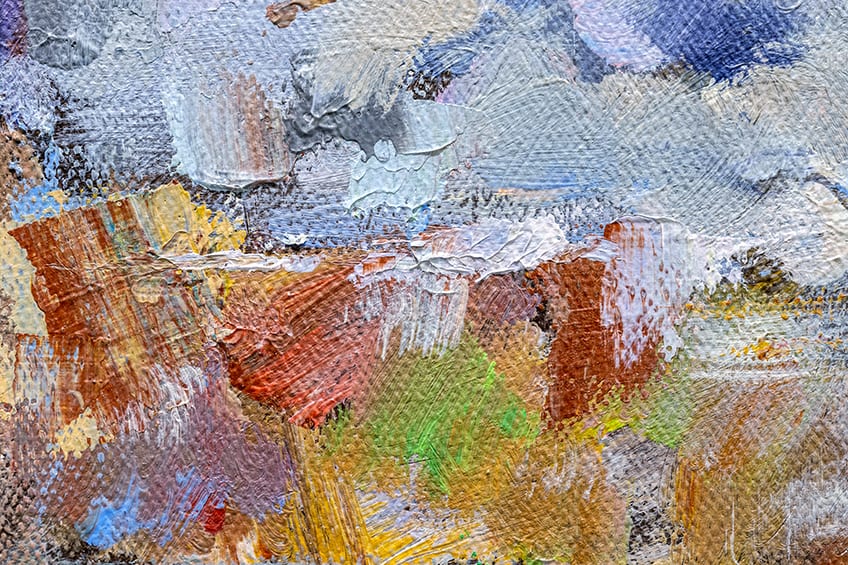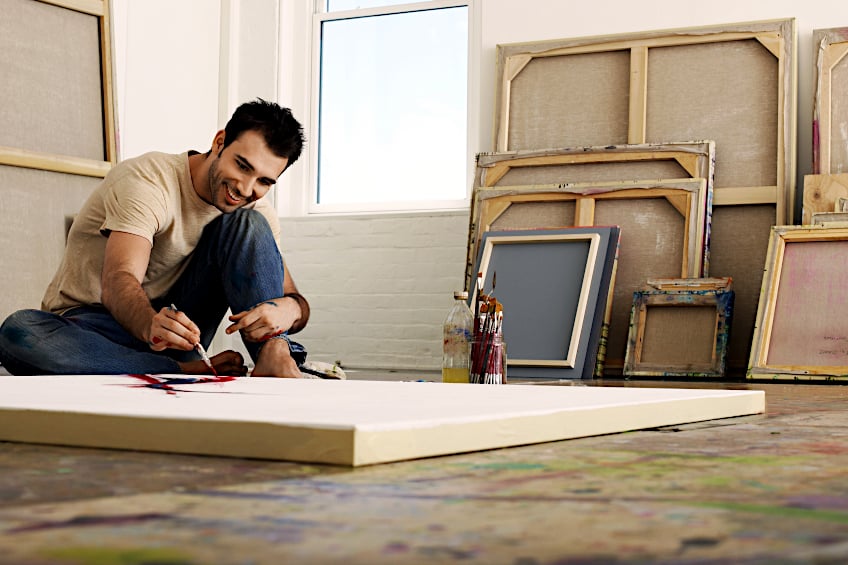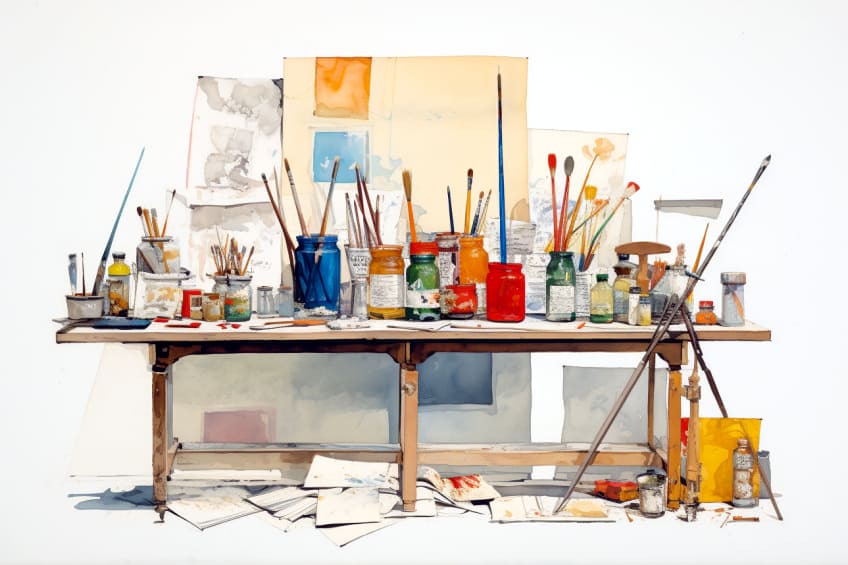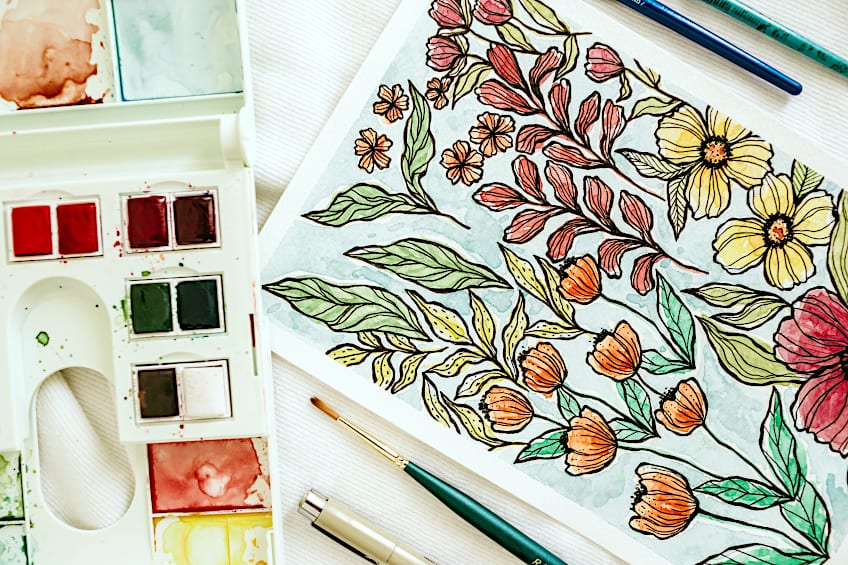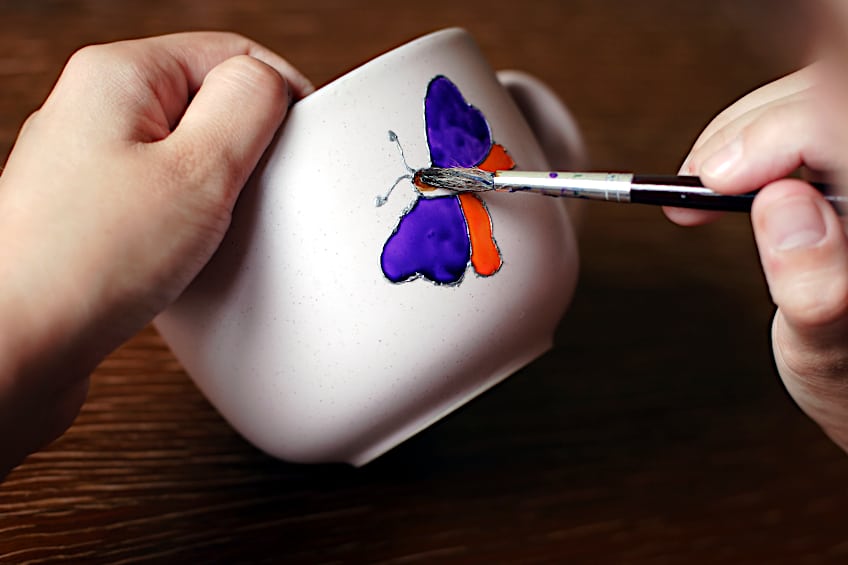Painting Surfaces for Acrylics – Substrates for Acrylic Paints
Acrylic is an incredibly versatile medium that allows you to seize full control of whatever you are trying to create. However, figuring out what to paint on goes beyond standard materials such as canvas and paper. The reality is that nearly any surface can be used for acrylic paint, but you will be slightly limited with what you will be able to paint depending on this factor. Below, we will be discussing the different painting surfaces for acrylics and their different properties. Keep reading to find out more!
Canvas
Canvas is a popular acrylic painting surface because it is absorbent, has a lovely fabric feel, and is easy to carry around. Canvas supports are classified into three categories, stretched, unstretched, and commercially manufactured canvas boards. Canvas paper can also be acquired in the form of pads, but it has an incredibly slippery texture that makes it difficult to deal with in comparison to canvas cloth.
Linen Canvas
A linen canvas is constructed of linen cloth and, because of its robust fibers, lasts significantly longer than cotton canvas. The fabric is constructed of Belgian linen, which is among the best in the world and comes at a high price.
Linen is a good canvas for professional painters or those looking to make long-lasting art.
Cotton canvases have a smooth surface, but linen canvases have more texture, based on how prepared they are.
Cotton Canvas
Cotton canvas merely references the material used to make the canvas. They can be stretched canvases or any of the other options described below. If you are courageous enough to try stretching canvas for acrylic painting, it would be best to start with cotton as it will be the easiest option.
Stretching Canvas
It demands practice to stretch it yourself and you will require a few tools to get it right. A staple gun, wood stretcher bars, and stretcher pliers are required.
Wrap the cloth securely around the bars and pin it at the rear. Simply start in the center and work your way towards the outer layer. These stretched canvases can be purchased in a broad range of sizes and can also be custom-made.
Choosing Canvas
Canvas is available in three weights, which are heavy, medium, and light. Lightweight is appropriate for smaller pieces, medium-weight for medium-sized works, and heavyweight for bigger items. Canvas quality varies according to weave – the more tightly wound the weave, the more costly.
Use the tighter weave if you are creating a realistic, accurate portrait with thinner layers of paint.
A coarse weave may be an eye-catching addition to a textured landscape or abstract artwork. Canvas is also available pre-primed or unprimed. Unprimed canvas is simpler to stretch, while pre-primed canvas enables you to omit the priming phase and begin painting quickly.
Advantages and Disadvantages of Using Canvas for Acrylic Painting
Painting on canvas has two primary advantages. First, it does not require a frame to exhibit the final work. Secondly, canvas may be purchased in various sizes, allowing an artist to tailor their work to the backdrop rather than the opposite.
However, one of the main disadvantages of using canvas for acrylic painting is that it can become loose over time, especially if it has not been stretched properly.
Canvas can also become expensive very quickly, especially if you are dealing with larger sizes and densities.
Before deciding on which canvas to buy, it would be a good idea to shop around before purchasing.
Tips for Preparing Canvas for Acrylic Painting
Before you can start painting canvas, it needs to be prepared before painting. There are around ten steps that should be taken before you begin and we have taken the liberty of providing them below.
- Start by wetting the canvas
- Thoroughly stir the acrylic gesso
- Pour enough gesso into a cup
- Thin the gesso with water
- Clean any spills
- Use a 2-inch brush to apply the mixture to the canvas
- Allow the gesso to dry
- Sand lightly and then reapply the gesso
- Repeat this process if needed
- Start painting
Paper
Paper and cardboard are excellent acrylic painting surfaces. Both are inexpensive and easily accessible. Both feature absorbent surfaces, which enable washes as well as over-watered acrylic methods. Choose acid-free papers or cardboard, that are more durable and will not contain contaminants that can discolor your artwork.
Different Types of Paper That Can Be Used for Acrylic Painting
While there are plenty of brands that offer paper for acrylic painting, there are essentially three types of paper that can be used.
The challenge is to use paper that is sturdy enough to avoid page warping caused by the application of thin paint since no one wants that.
Heavier paper also happens to be better suited to dealing with the weight of thicker paint.
Acrylic Paper
Acrylic paper can also be used. It is specifically made for acrylic paint, as the name implies, and has a little rough surface to guarantee that your paint adheres to it. This is a specialized paper that you are more likely to find online than at a nearby retailer.
The Canson brand, for example, is a cost-effective solution that ensures your surface can withstand the specific needs of acrylic paint.
Watercolor Paper
The texture of watercolor sheets varies. You may get hot-pressed paper, which is more velvety, and cold-pressed paper, which is coarser and more toothy. Which paper you use will dictate the aesthetic of your painting; we recommend experimenting with many types of paper before beginning your final piece of art so you are familiar with what to expect.
Synthetic Paper
Synthetic paper, as opposed to linen or wood, is constructed of polypropylene and hence has the apparent benefit of not warping. Another benefit is that this sort of paper is pH neutral, so there will be no surprise yellowing.
However, keep in mind that this type of paper has the lowest absorption rate of all your possibilities, so it may take some extra work to get your paint to stick to it successfully.
The Advantages and Disadvantages of Using Paper for Acrylic Painting
Acrylic paper has plenty of advantages which makes it one of the best things you can paint on. It is an excellent place for beginners to start and it is capable of tolerating different types of wet media. Furthermore, it can easily be recycled, which is perfect if you are conscious about the environment.
One of the best things about using paper is that it is pH neutral, so there is no chance of it yellowing. However, it is susceptible to warping and if you are keen on channeling your inner Bob Ross, wet-on-wet painting is not an option.
Tips for Preparing Paper for Acrylic Painting
Paper is usually already prepared and this means that you will not need to spend time preparing it for paint. However, there are a few tips that you should keep in mind before you start painting paper with acrylic paint.
- You do not need to prime your paper if you are working on high-quality, acid-free paper.
- Since all paper absorbs to some extent, apply acrylic gesso on the surface. Gesso can also be used to thicken thin paper that is susceptible to buckling and bending.
- Gesso also gives the surface of paper tooth, making it perfect for pastels too.
Wood
Wood is among the best painting surfaces for acrylics and it will allow you to push the boundaries of your creativity. However, you cannot simply take out a brush and start painting a piece of wood, as it needs to be prepared.
The method works on many types of wood products, from little craft items to lumber panels and furniture.
Hardwood Panels
For ages, hardwood panels were used mostly for tempera and oil paintings. These panels, which are often manufactured from hardwoods such as birch, walnut, oak, and mahogany survive a long time, giving them a viable alternative to canvas for individuals who wish for their work to last. Hardwood is also used as a painting substrate in painted wood crafts.
Hardboard Panels
Hardboard panels, also known as masonite, are manufactured from a combination of wood fibers that are crushed down and shaped into a board with heat, pressure, and natural lignin stickiness. They are a terrific choice for novices and make great acrylic painting surfaces because they are inexpensive but long-lasting.
Many professional painters may even favor masonite to canvas.
Medium-Density Fiberboard (MDF)
MDF is more modern and presumably more durable than masonite, but its artificial resin includes carcinogenic formaldehyde. This can be very harmful when it is discharged into the air and inhaled if the board is cut or sanded. Although safer MDF materials are becoming available, we would still exercise caution.
The Advantages and Disadvantages of Using Wood for Acrylic Painting
While wood is an incredibly versatile surface to paint on, it requires a great deal of preparation before you can start painting it. Before we dive into the negatives, there are plenty of positives to discuss. Wood is among the most ideal surfaces for acrylic paint, but it is important to understand the type of wood that you are dealing with. Wood is generally classified according to its composition, processing method, thickness, and species.
It is important to understand that not all wood is equal and some will allow you to do a much better job when painting.
Some woods, especially if they are not treated properly are prone to swelling or developing mold, which is the last thing that you would want to deal with. Lastly, wood is quite heavy, especially if you are always on the move, so it is not the ideal surface if you are a traveling artist.
Tips for Preparing Wood for Acrylic Painting
Untreated wood has a lot of contaminants that might cause color distortion later on, and particleboard swells when wet. Before beginning to work with wood, ensure that the work surface is completely clean and dry, with no imperfections, disparity, or damage. Before painting, use a stain remover, primer, and sand the wood.
Priming the surface of any type of wood will ensure that the paint has a good surface to adhere to and this will make the painting process much more enjoyable. The process of preparing wood takes much longer than other surfaces, but it can be broken into a few steps.
- Clean the surface
- Thoroughly sand the wood with the grain to remove any rough areas
- If there are any cracks, holes, or gaps, fill them with wood filler and sand the surface once dry
- Apply a coat of primer
- Start painting
Other Surfaces
There are a variety of other surfaces available in case you are wondering what to paint on. Technically, you are able to paint on anything, even a person, but we are going to take a look at some of the more uncommon surfaces that are great for painting.
Keep in mind that there is no such thing as the best surface. It is up to you to create something special with the surface you are dealing with.
Stone
Acrylics may also be used on different types of rocks and stones. You may need to select smooth rocks to ensure that the surface is suitable for painting. Given the size of the selected rock, you may require specific paintbrushes.
For instance, you will need smaller brushes that are designed for detail work. Simply select a rock, clean it with water, allow it to dry, apply gesso, and then you can start painting it. If you are painting with kids or just for pleasure, you can omit the gesso.
Plastic
Plastic should not be utilized as one of the acrylic painting surfaces. Paint may readily peel off its non-porous and lustrous surface.
With proper preparation, some matte plastics may accept acrylic paint.
To paint on plastic, you must first prepare it with a specific primer, such as a Krylon spray primer or a plastic base coat.
Walls
Acrylic paint was developed initially for both exterior and interior painting. It is now two entirely separate types of paint, and acrylic paint utilized for painting may surely be used on walls within the home as well.
Use the exterior paint meant for it to ensure that it lasts longer and that you will not have to repaint it. Artists’ acrylics may discolor when subjected to direct sunshine or become yellow when lacquered. Hence, it would be best to stick to interior surfaces as your artwork will be likely to last much longer.
Metal
Metal is a unique acrylic painting surface. First and foremost, metal, like plastic and glass, does not provide enough paint adherence. Furthermore, there is an additional risk with the possibility of rust.
Metal must be carefully primed, rust-proofed, and protected with a chemical coat before painting.
Unless your concept involved combining the aesthetics of metal with the vibrancy and texture of acrylics, combining these is simply is not worth the trouble as it can be very difficult to find the ideal surface for an acrylic on metal painting.
Ceramics
Painting on ceramics is a lot of fun as you can paint on the cup of your choice and bake it in the oven to dry. It makes sense because clay is a porous material. In some pottery workshops, you will have the opportunity to paint with fluid paint on your pieces. Folk art acrylics are designed particularly for ceramics and glassware, although they are also suitable for dishwashing.
Glass
Glass is not an ideal surface for acrylic painting since it is non-absorbent and shiny. However, with the appropriate paint, anything is possible. Without a proper primer, the paint will eventually flake off.
Unless you have the primer that is necessary to allow the glass to stick to the surface, we would strongly suggest not painting it at all.
You may also paint on floats or windows for your painting trials, in addition to your kitchenware. It has a low-cost, smooth, and transparent surface, but it is, as you might expect, brittle. To paint on glass, first clean it with rubbing alcohol, then sand it, use gesso, paint, then either apply a protective finish or bake your creation.
As you can tell, there are plenty of different painting surfaces for acrylics, with each one presenting different advantages and disadvantages. However, we believe that it is a great way to explore different surfaces for painting.
There are a range of different materials that can easily accept acrylic paint, and there are others that require much more preparation. Sure, there are other factors that need to be considered, such as your budget for painting materials, but even if you only have a few colors, it should be more than enough to create something special. We hope that you have learned enough with this guide, and we wish you the best of luck on your painting journey!
Frequently Asked Questions
What Are Some of the Most Popular Painting Surfaces for Acrylics?
Some popular surfaces for acrylic paint include hardwood panels, hardboard panels, medium-density fiberboard (MDF), and different types of paper. However, canvas, fabric, and even glass are also incredibly popular.
What Are Common Things You Can Paint On?
At this juncture, you can paint on most surfaces that are made from wood, glass, canvas, metal, and paper. Some people have gone as far as to paint sneakers and different types of clothing, so essentially, nothing is out of the ordinary anymore.
What Are the Best Surfaces for Acrylic Paint?
Canvas is among the best painting surfaces for acrylics because of how well it holds color, along with the great texture of the fabric. Canvas is available in different sizes and you can easily get it in custom sizes. However, we would argue that the surface depends on the level of skill of the artist. So, even if you have the best canvas, you are not guaranteed to create something beautiful.
Megan is a writer and researcher who holds a degree in Social Sciences, with a specialization in Psychology and Environmental Science, from the University of Cape Town. Her dedication to acquiring knowledge and making a positive impact has driven her current work in promoting conscious and sustainable growth in Southern Africa. Megan’s interests encompass exploring the physical and psychological impacts of color in our environment on our mood and well-being. She is also passionate about the role of art and creativity, which has been an integral part of society since the beginning of human history. Since 2022, Megan has been contributing blog posts on painting and color theory at artfilemagazine.
Learn more about Megan van Schoor and about us.
Cite this Article
Megan, van Schoor, “Painting Surfaces for Acrylics – Substrates for Acrylic Paints.” artfilemagazine – Your Online Art Source. December 13, 2023. URL: https://artfilemagazine.com/painting-surfaces-for-acrylics/
van Schoor, M. (2023, 13 December). Painting Surfaces for Acrylics – Substrates for Acrylic Paints. artfilemagazine – Your Online Art Source. https://artfilemagazine.com/painting-surfaces-for-acrylics/
van Schoor, Megan. “Painting Surfaces for Acrylics – Substrates for Acrylic Paints.” artfilemagazine – Your Online Art Source, December 13, 2023. https://artfilemagazine.com/painting-surfaces-for-acrylics/.




